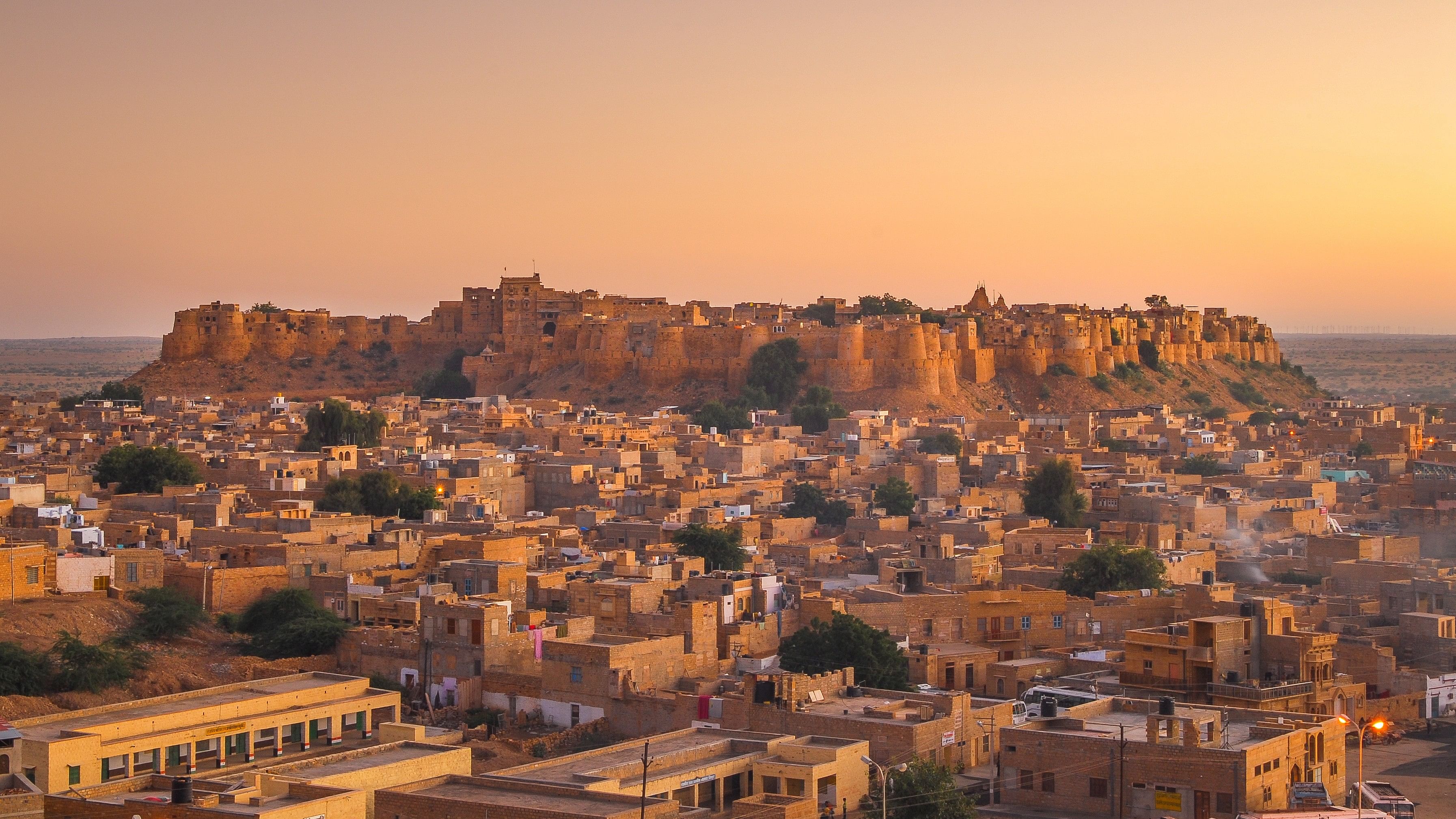
A view of Jaisalmer
Credit: iStock photo
After visiting Jaisalmer recently back-to-back from a trip to Morocco, we couldn’t help but compare the two. While Jaisalmer’s monuments
and historical significance far surpassed Morocco’s, cleanliness scores were reversed, initiatives like the so-called Swachh Bharat notwithstanding.
India, quite apart from its rich and well-known historical monuments, abounds with hidden treasures waiting to be discovered. The Bhadariya Library is a prime example. Bhadariya is a tiny village, near Pokhran, with a reported population of 1688 (in 2020), 76 kilometres from Jaisalmer. We stumbled upon it serendipitously, mentioned in passing by a friend. Despite its obscurity—missing from tourist maps and overlooked
by travel experts—it remains a hidden gem, with only a fleeting mention on online travel platforms.
Civilizations and cities historically thrived adjacent to rivers, roads, and seashores. Recently, airports have also started catalysing township development. Here was an opportunity for at least a village to spring up around a library, which was established a quarter of a century ago. But Bhadariya failed to evolve even into a village hub, remaining hidden in the Thar desert.
In the ordinary course, travellers wouldn’t veer off the Jaisalmer-Jodhpur highway, NH 11, onto the unassuming road to Bhadariya. Flanked by vast cow shelters, the route leads to the delightful Shri Bhadariya Mata Ji temple. This sparkling white temple, in the Nagar style, lacks the typical peak, or shikhar, of Hindu temples. Originally erected in 1831 by Maharawal Gaj Singh of Jaisalmer, it was constructed with locally available sandstone and lime to commemorate his victory in a fierce battle against Bikaner.
Underneath the temple lies what’s arguably Asia’s largest underground library. However, upon descending a single flight of stairs, it’s clear that grandeur wasn’t Harbansh Singh Maharaj’s intent when he built it in 1998. Initially a passion project for his book collection, the library later expanded with the Shri Bhadariya Mata Ji temple above. Housing around 200,000 diverse titles and a total of 900,000 volumes, with seating for 4,000 individuals, the library opened for us alone, as not a soul was found reading within its walls on that working day.
Upon stepping into the library, one is immediately greeted by an unusually long — probably some 150 metres — and impeccably clean corridor, with closed shelves lining either side. As you continue onwards, each corridor leads to the next and to
the next, all identical and each infinitely long — the illusion of infinity fashioned through clever use of mirrored walls at each end of every corridor. I think I counted eight such corridors. In all, the library comprises, but doesn’t boast, 562 spotlessly clean glass shelves.
A swift assessment of the shelves suggests a rich and varied but largely eclectic collection, markedly incomplete in any specific discipline, though rich in randomness, typical of an untrained but fervent collector. It has an enormous collection of audit records and laws dating back to the British era, as well as a vast collection of mythological works.
Regrettably, the library has neither a librarian nor any staff to manage it. The sole caretaker of the library was an attendant from the Jagdamba Seva Committee Trust’s office who accompanied us to open the library and show us around, but he had limited knowledge of its contents. Surprisingly, the books are not even catalogued and carry no library classification numbers, hindering their integration into any library network.
Currently, some straggling efforts are underway to document the collection. Though a brief write-up in Times Travel on May 22, 2020 claims, “Scholars and learners come here from all over the world for research and learning purposes,” this seems improbable. The attendant told us that the library was hardly ever used by anyone because a) there is no nearby accommodation for visitors for miles, except for the limited space available at the temple premises, and b) the library lacks a documented system to assist visiting scholars. But yes, the potential for scholars to come from far and wide exists.
Perhaps if some university adopts the library, it can bring some method to the randomness that the library personifies. Perhaps the village can be developed into a small township with a public-private partnership, for one thing is clear: in any other country, the library would have found a prime place on any tourist map. We know of university towns worldwide. There is no reason why a country the size of India cannot have scope for just one library township.
(The writer is a former
professor of IIM,
Ahmedabad and an author)